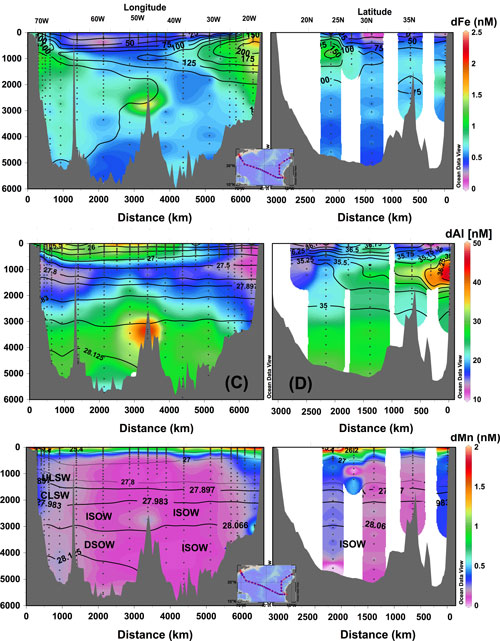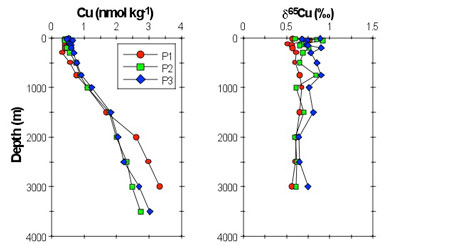“Demystifying Radioactivity”
with Tim Kenna and Margie Turrin
Originally presented: 22 November of 2014
Tim Kenna (LDEO Research Scientist) and Margie Turrin (LDEO Education Coordinator) return to E2C to share some innovative discoveries and present draft version of curriculum activities for teacher feedback.
Radioactivity, both naturally occurring and anthropogenic, is highly debated
and  largely misunderstood. We anticipate with ever increasing energy needs nuclear energy will play an increasingly prominent role in public debate, whether it is through localized power needs or global incidents like Fukushima. In addition to the powerful curricular model of connecting topics from science instruction to real world applications, developing students who can independently assess public debate and media reports on radioactivity is important in creating a scientifically literate future citizenry.
largely misunderstood. We anticipate with ever increasing energy needs nuclear energy will play an increasingly prominent role in public debate, whether it is through localized power needs or global incidents like Fukushima. In addition to the powerful curricular model of connecting topics from science instruction to real world applications, developing students who can independently assess public debate and media reports on radioactivity is important in creating a scientifically literate future citizenry.
As part of our outreach for our NSF-funded GEOTRACES project, we are developing curriculum that demystifies the topic of radioactivity with specific emphasis on anthropogenic radionuclides, their transport, partitioning, and dilution. Our goal is to create hands on/active learning curricular components for high school chemistry and environmental science courses focused on developing critical thinking skills related to radioactivity in the environment.
In connection with this goal, consider submitting a response to the “Integrating Education Technologies” challenge below.
Agenda:
0930-1000 INTRODUCTION
Welcome
Motivation for developing the activity
NSF-funded GEOTRACES Project
Goals of E2C Activity
Framework for today’s program Images from this Workshop
1000-1045 What’s in a dose?
Radioactivity facts and myths
1045-1130 The power of graphics
Processing written information
1130-1215 Checklist for action
1215-12-30 Wrap-up and resources
Related reading: “A MILLENNIUM PERSPECTIVE ON THE CONTRIBUTION OF GLOBAL FALLOUT RADIONUCLIDES TO OCEAN SCIENCE” by Hugh D. Livingston and Pavel P. Povinec (2002)



GEOTRACES is an international project focused on improving our understanding of ocean processes and quantifying fluxes that control the distributions of selected trace elements and isotopes in the ocean.
Its mission is:
To identify processes and quantify fluxes that control the distributions of key trace elements and isotopes in the ocean, and to establish the sensitivity of these distributions to changing environmental conditions.
Many trace elements are critical for marine life and therefore influence the functioning of ocean ecosystems and the global carbon cycle. However scientists currently do not have a clear understanding of the sources, or the internal cycling and settling of these elements & isotopes. Some trace elements are also of concern as contaminants, while others, together with a diverse array of isotopes, are used to examine modern-ocean processes and the role of the ocean in past climate change. Data from this project will help establish the sensitivity of these distributions to changing environmental conditions.
The movement of anthropogenic radionuclides in ocean circulation is one of the tools used in the GEOTRACES study Yet for much of the general public radioactivity, both naturally occurring and anthropogenic, is highly debated, largely misunderstood and for many a source of scientific misunderstanding.
Dr. Robert Anderson is the P.I. of Lamont’s participants. Researchers seek to collect samples from the full water column and then extract selected trace elements and isotopes. These will be used to investigate sources, sinks, and internal cycling of these species. From these studies, they hope to learn, among other things, more about physical, chemical, and biological processes regulating their distribution in the sea, and how to use these as proxies for past environments.
Peruse the GEOTRACES brochure.
Previous E2C Workshops by Tim Kenna and Margie Turrin:
“Hudson River Project: Coordinated Efforts to Bring Teachers and Students Together” (Oct 2006)
Upcoming: Tim & Margie will present a poster at the 2014 AGU Fall Meeting:
ED51C-3443Using Next Generation Science Standards (NGSS) Practices to Address Scientific Misunderstandings Around Complex Environmental Issues
Selected Educational Resources
“How Does Radioactive Decay Work?”
“Fundamentals of Stable Isotope Geochemistry”
“Mercury in the Environment”
Integrating Educational Technologies
General suggestions: Integrating Educational Technologies into Your Classrooms
Your assignment:
1) What characteristics make “on-line news stories” effective as a classroom teaching tool? What characteristics make them ineffective or misleading?
2) When should on-line news-based activities be used for full-class instruction, and when should they be used for small groups or individual projects?
3) Describe strategies to locate suitable on-line news stories for your classes.
and
4) Design a lesson plan that incorporates at least one on-line news-based activity.
E2C Follow-up:
You may send your model lesson and other responses to this “assignment” to michael@earth2class.org. If suitable, we will post your work in the E2C lesson plans and/or add them to this section of the Workshop website.


Leave a Reply
You must be logged in to post a comment.